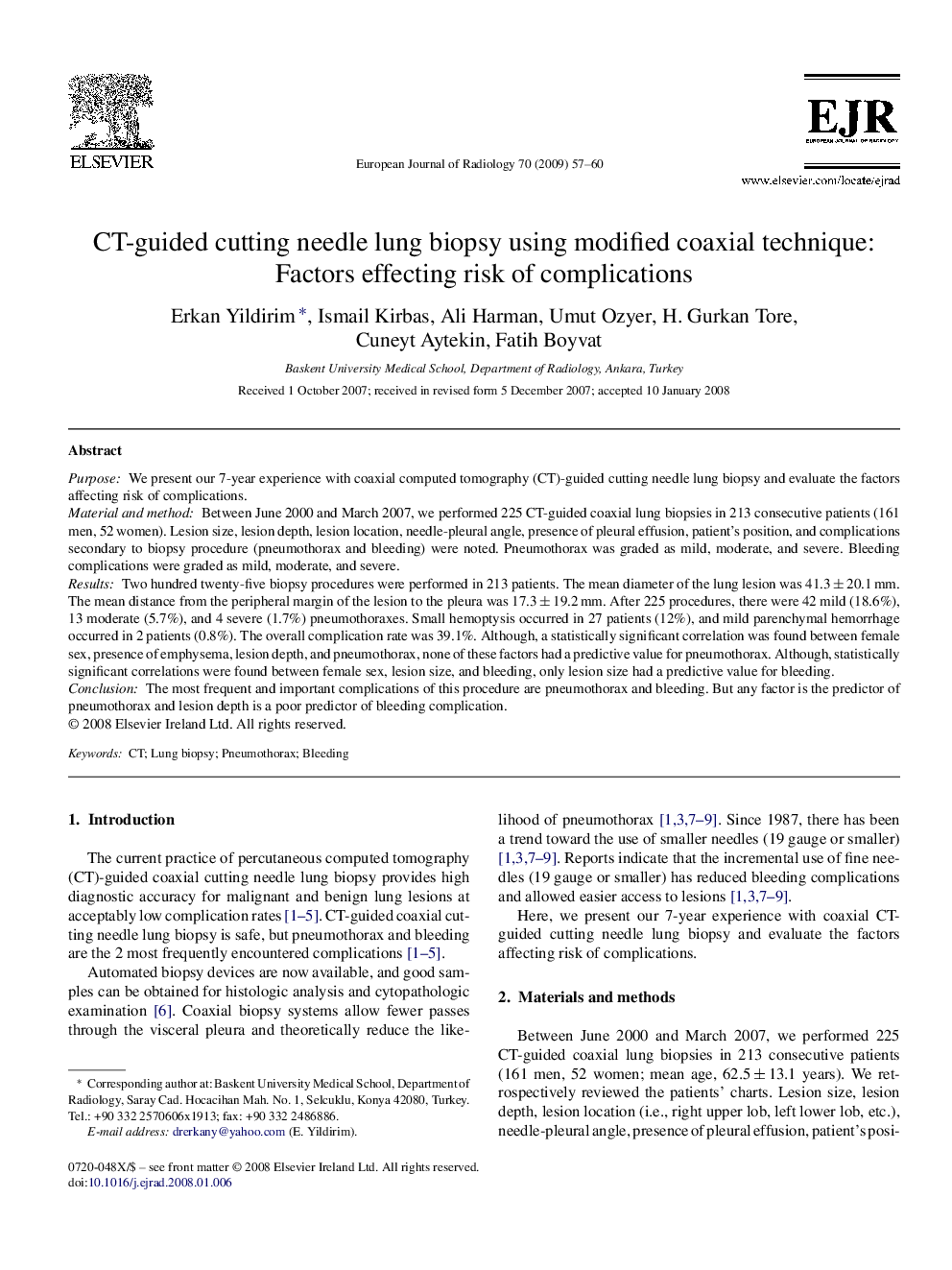| Article ID | Journal | Published Year | Pages | File Type |
|---|---|---|---|---|
| 4227654 | European Journal of Radiology | 2009 | 4 Pages |
PurposeWe present our 7-year experience with coaxial computed tomography (CT)-guided cutting needle lung biopsy and evaluate the factors affecting risk of complications.Material and methodBetween June 2000 and March 2007, we performed 225 CT-guided coaxial lung biopsies in 213 consecutive patients (161 men, 52 women). Lesion size, lesion depth, lesion location, needle-pleural angle, presence of pleural effusion, patient's position, and complications secondary to biopsy procedure (pneumothorax and bleeding) were noted. Pneumothorax was graded as mild, moderate, and severe. Bleeding complications were graded as mild, moderate, and severe.ResultsTwo hundred twenty-five biopsy procedures were performed in 213 patients. The mean diameter of the lung lesion was 41.3 ± 20.1 mm. The mean distance from the peripheral margin of the lesion to the pleura was 17.3 ± 19.2 mm. After 225 procedures, there were 42 mild (18.6%), 13 moderate (5.7%), and 4 severe (1.7%) pneumothoraxes. Small hemoptysis occurred in 27 patients (12%), and mild parenchymal hemorrhage occurred in 2 patients (0.8%). The overall complication rate was 39.1%. Although, a statistically significant correlation was found between female sex, presence of emphysema, lesion depth, and pneumothorax, none of these factors had a predictive value for pneumothorax. Although, statistically significant correlations were found between female sex, lesion size, and bleeding, only lesion size had a predictive value for bleeding.ConclusionThe most frequent and important complications of this procedure are pneumothorax and bleeding. But any factor is the predictor of pneumothorax and lesion depth is a poor predictor of bleeding complication.
